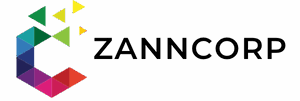Table of Contents
ToggleIn a world where everything from your fridge to your favorite coffee mug can be connected to the internet, keeping track of all those devices can feel like herding cats. Enter IoT device tracking—the superhero of the tech realm, swooping in to save the day. With the ability to monitor, manage, and even locate your gadgets, it’s like having a personal assistant who never takes a coffee break.
Overview of IoT Device Tracking
IoT device tracking involves monitoring and managing devices connected to the internet. This technology plays a crucial role in ensuring efficient operation and maintenance of countless gadgets. Users can benefit from real-time insights into device performance, location, and status.
Wireless technologies, such as RFID, GPS, and Bluetooth, enhance IoT device tracking capabilities. Tracking data enables users to respond to device activity quickly. Industries, including healthcare and logistics, leverage these tools for optimal resource management.
Device identification and authentication become seamless with advanced tracking systems. Businesses maintain accurate asset inventories and enhance security measures. In smart homes, tracking ensures that devices communicate effectively with minimal disruption.
Connectivity remains vital for effective IoT device tracking. Reliable internet access allows users to retrieve and analyze data without interruptions. Cloud computing further supports data storage and processing, providing scalability as needs grow.
Analytics tools complement IoT device tracking efforts, enabling users to make data-driven decisions. Historical data aids in predicting maintenance schedules and identifying trends. By leveraging this information, companies can improve operational efficiency and reduce costs.
Adoption of IoT device tracking continues to expand. As more devices connect to the internet, businesses must prioritize tracking solutions. Doing so allows organizations to harness the full potential of IoT technology while maintaining control over their assets.
Importance of IoT Device Tracking
IoT device tracking holds significant value in ensuring efficient management and monitoring of connected devices. Organizations increasingly rely on tracking solutions to leverage the full potential of IoT technology while maintaining control over assets.
Benefits for Businesses
Cost reductions benefit organizations through effective IoT device tracking. Companies minimize downtime by predicting maintenance needs based on real-time data. Ensuring accurate inventory management becomes easier, as devices are consistently monitored. Enhanced security features reduce the risk of asset theft or loss, protecting valuable resources. In addition, businesses experience improved operational efficiency through streamlined processes and resource allocation, which directly contributes to overall productivity.
Enhancing User Experience
User accessibility improves significantly with IoT device tracking. Individuals enjoy real-time insights regarding device performance and location, fostering a sense of control over their gadgets. Connectivity between devices leads to seamless interactions, resulting in a more efficient smart home environment. Devices respond promptly to user commands, creating a more intuitive experience. Additionally, predictive analytics helps users anticipate device needs, allowing for preemptive actions that maintain optimal performance.
Key Technologies in IoT Device Tracking
Several technologies play a critical role in IoT device tracking, enhancing capabilities and ensuring seamless connectivity.
GPS and Geolocation
GPS technology provides precise location data for tracking devices across vast distances. With global coverage, it allows users to monitor assets in real time, improving logistics and security. Many applications utilize geolocation services not just for tracking but also for analytics and insights into user behavior. By combining GPS with geofencing, businesses receive alerts when devices enter or exit designated areas, optimizing resource management. Real-time location updates support efficient navigation, creating smoother operational flows in various sectors, such as transportation and delivery services.
RFID and NFC
RFID technology enables automatic identification and tracking of devices using radio waves. Asset tags attached to items facilitate automated inventory management, enhancing accuracy and efficiency. Many industries benefit from RFID for monitoring equipment and tools, minimizing loss or theft. Near Field Communication (NFC) complements RFID by allowing devices to communicate over short distances. Users often leverage NFC for secure transactions, ensuring quick interactions, especially in retail and payment systems. Overall, both RFID and NFC contribute significantly to improving asset visibility and operational efficiency in IoT ecosystems.
Challenges in IoT Device Tracking
IoT device tracking encounters several challenges that affect its effectiveness and reliability.
Security and Privacy Concerns
Security remains a top concern in IoT device tracking. Unauthorized access to sensitive data can lead to data breaches and privacy violations. Devices often transmit sensitive information across networks, making them vulnerable to cyber threats. Implementing robust encryption measures is essential for safeguarding data in transit. Awareness of potential vulnerabilities forces manufacturers to prioritize security features during device design. User education also plays a crucial role in promoting secure practices. Establishing strong authentication processes helps reduce risks associated with device usage. Inadequate security measures can result in significant financial repercussions and loss of consumer trust.
Scalability Issues
Scalability poses challenges as the number of connected devices grows. Increased demand for IoT devices requires tracking systems to efficiently manage vast amounts of data. Many existing systems struggle to handle data generated by numerous devices concurrently. Expanding infrastructure becomes necessary to accommodate rising data volumes. Companies must invest in scalable solutions that grow alongside their IoT networks. Balancing performance with resource allocation is critical for maintaining efficiency. Integrating cloud-based solutions can facilitate scalability, allowing businesses to adjust easily to fluctuating demands. Overcoming these scalability hurdles ensures seamless operations and reliable device tracking.
Future Trends in IoT Device Tracking
Emerging technologies significantly shape the future of IoT device tracking. Artificial intelligence enhances tracking solutions by enabling machine learning algorithms to analyze large datasets, improving predictive analytics for maintenance. Companies can anticipate issues before they arise, leading to increased uptime for devices.
Additionally, edge computing is becoming crucial in the IoT landscape. This method brings data processing closer to the devices, reducing latency and bandwidth usage. Fast and efficient data handling allows for real-time decision-making, essential for critical applications in logistics and healthcare.
Blockchain technology plays a key role in improving security and transparency within IoT device tracking. By decentralizing data storage, it reduces the risk of unauthorized access and ensures the integrity of device information. Enterprises can build trust with customers by maintaining secure transactions and reliable asset management.
5G technology is set to revolutionize connectivity for IoT devices. Higher speeds and lower latency enable more devices to communicate simultaneously without interruption. Businesses that adopt 5G can implement advanced tracking solutions, leading to enhanced operational efficiency and responsiveness.
Interoperability remains a focus for the future of IoT device tracking. Standardized protocols facilitate communication between different devices and platforms, ensuring seamless integration within complex environments. Organizations will benefit from a unified system, simplifying management and tracking efforts.
Predictive analytics will continue to evolve, fueled by advancements in big data. Insights derived from analyzing user behavior can enhance personalization and user experience across smart home devices. Users gain valuable knowledge, allowing for optimized device performance that aligns with individual preferences.
Conclusion
The rise of IoT device tracking is transforming how individuals and businesses manage their connected devices. By leveraging advanced technologies like GPS, RFID, and AI, users gain unparalleled insights into device performance and location. This not only enhances operational efficiency but also significantly improves asset security and management.
As the number of connected devices continues to grow, the importance of robust tracking solutions will only increase. Companies and individuals alike must prioritize these systems to fully harness the potential of IoT technology. Looking ahead, innovations in connectivity and analytics will further streamline device tracking, making it an indispensable tool in today’s digital landscape.





